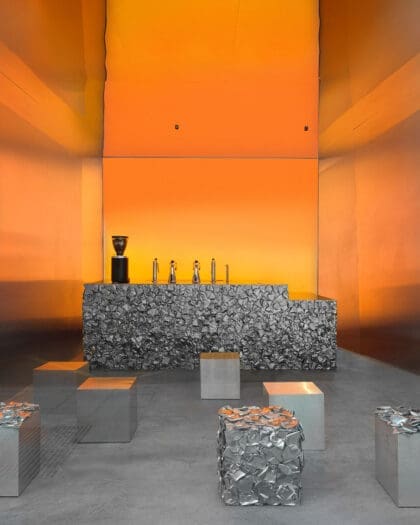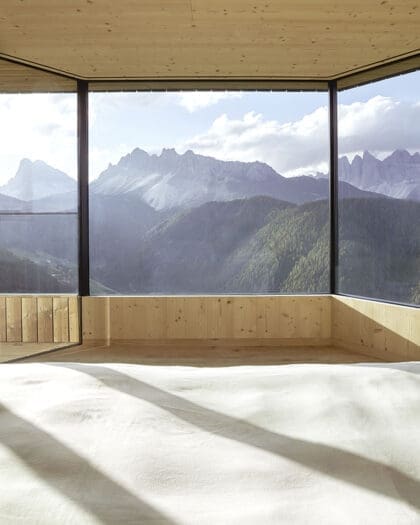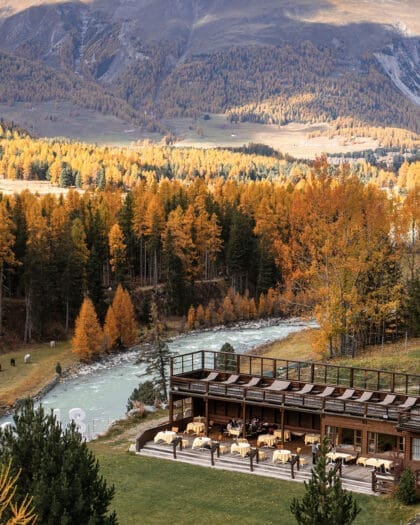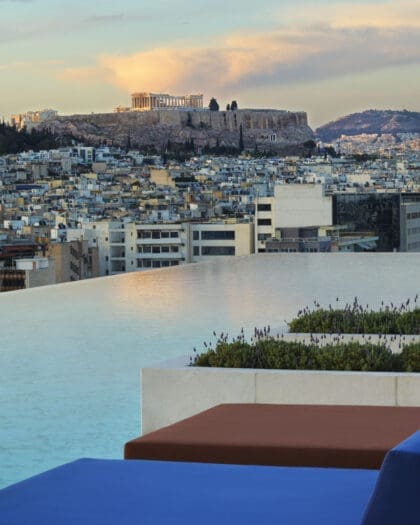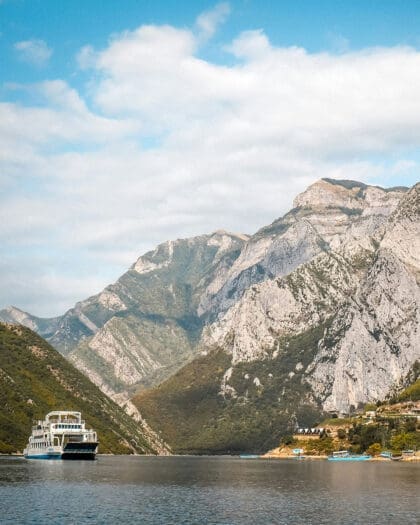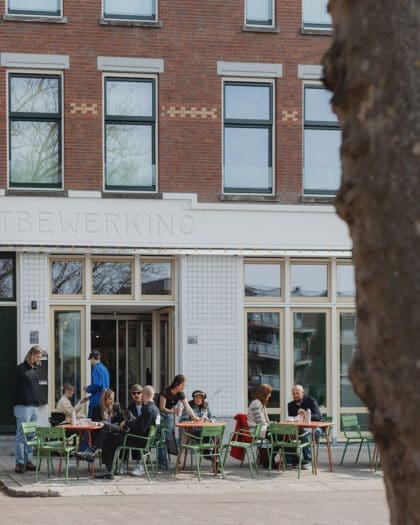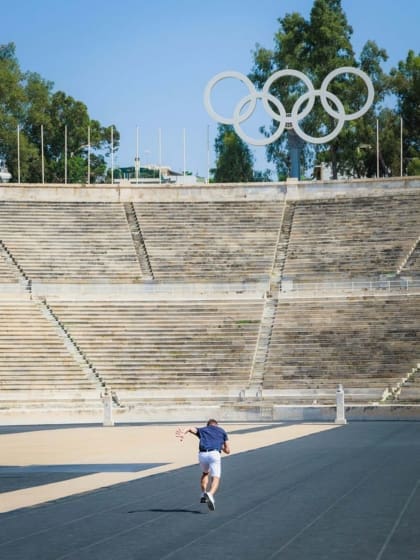
What cultural legacies have the Olympic Games left its host cities?
A global sporting celebration like no other, the Olympic Games often has a transformative effect on the destinations that host it. Ahead of Paris 2024, we chart the distinctive legacies left by the Games and highlight some of the fascinating Olympic sites worth visiting today.
From a vantage point in front of the Montjuïc Swimming Pool, the Barcelona skyline spreads and shimmers below. On the horizon are the Olympic Village and Olympic Port, dominated by two towers also built during that feverish era.
This sunny view is one that sticks in the mind – it’s arguably the iconic image of the iconic Olympic Games. This was where the diving took place during the 1992 Olympics and this view, soundtracked by Freddie Mercury and Montserrat Caballé’s song “Barcelona”, was perhaps the highpoint of the entire movement, in a less cynical era when sporting and cultural values took centre stage.
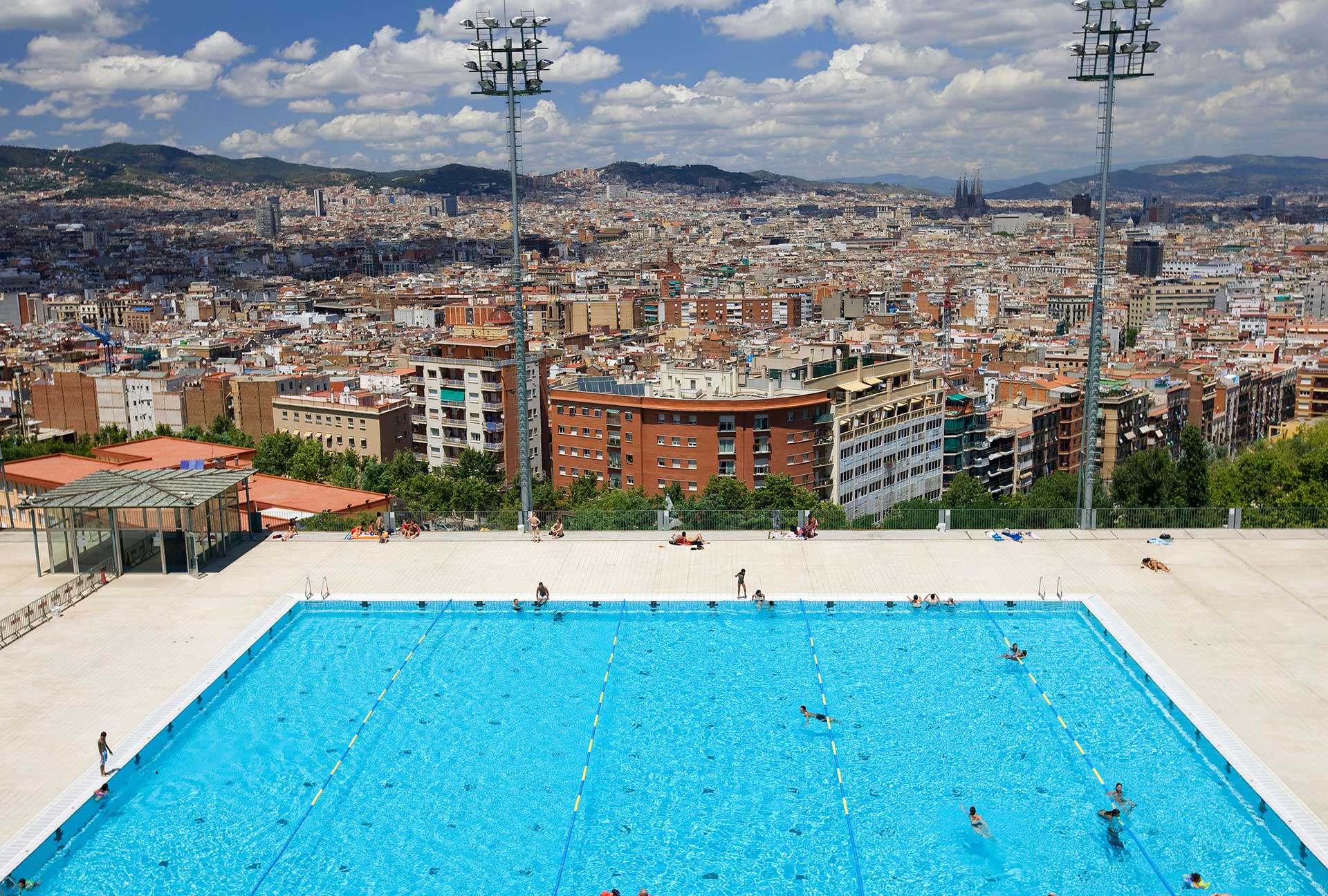
The 1992 event represented the victory of Spanish democracy, the rise of Barcelona, the end of the Cold War and the reconciliation of East and West, the start of a period of peace and prosperity for many.
Since the Olympics inception in 1896, the event has drawn the world’s focus to cities around the world, navigating significant global events and embodying the social, cultural and architectural norms of each era to leave a distinct legacy on its host city. As Paris hosts the Olympic Games and Paralympics in 2024, what are some of the enduring lessons to be learned?

A city reborn
The Barcelona Games were a triumph partly because of the excellent architecture and urban design that went with it, and today the legacy of the Games fits seamlessly into city life and continues to be enjoyed. Today, you can visit the Olympic Port (soon to reopen after a refurbishment ahead of this year’s America’s Cup), and make use of the beaches that were repaired and filled with sand to cater for a city that never really faced the sea before 1992. The host city’s new urban motorway was built with a mind to making it as unobtrusive as possible, and the Olympic Village for the athletes is still a coveted place to live, its apartment blocks and colourful sculptures bringing the Ciutadella and Glories districts to life.
“The Barcelona Games were taken advantage of by the municipal government with strategic projects of the city in mind: improving the coast, the conversion of obsolete industrial areas, re-connecting neighbourhoods, the ring road and making Montjuïc mountain as the main sports focus,” says Barcelona-based architect and ArquinFAD president Marc Aureli Santos, before nodding to the project’s postmodern appeal. “The intention was to promote the highest quality of design: the Olympic Village’s different volumes and scales gave it a mystic Mediterranean quality.”
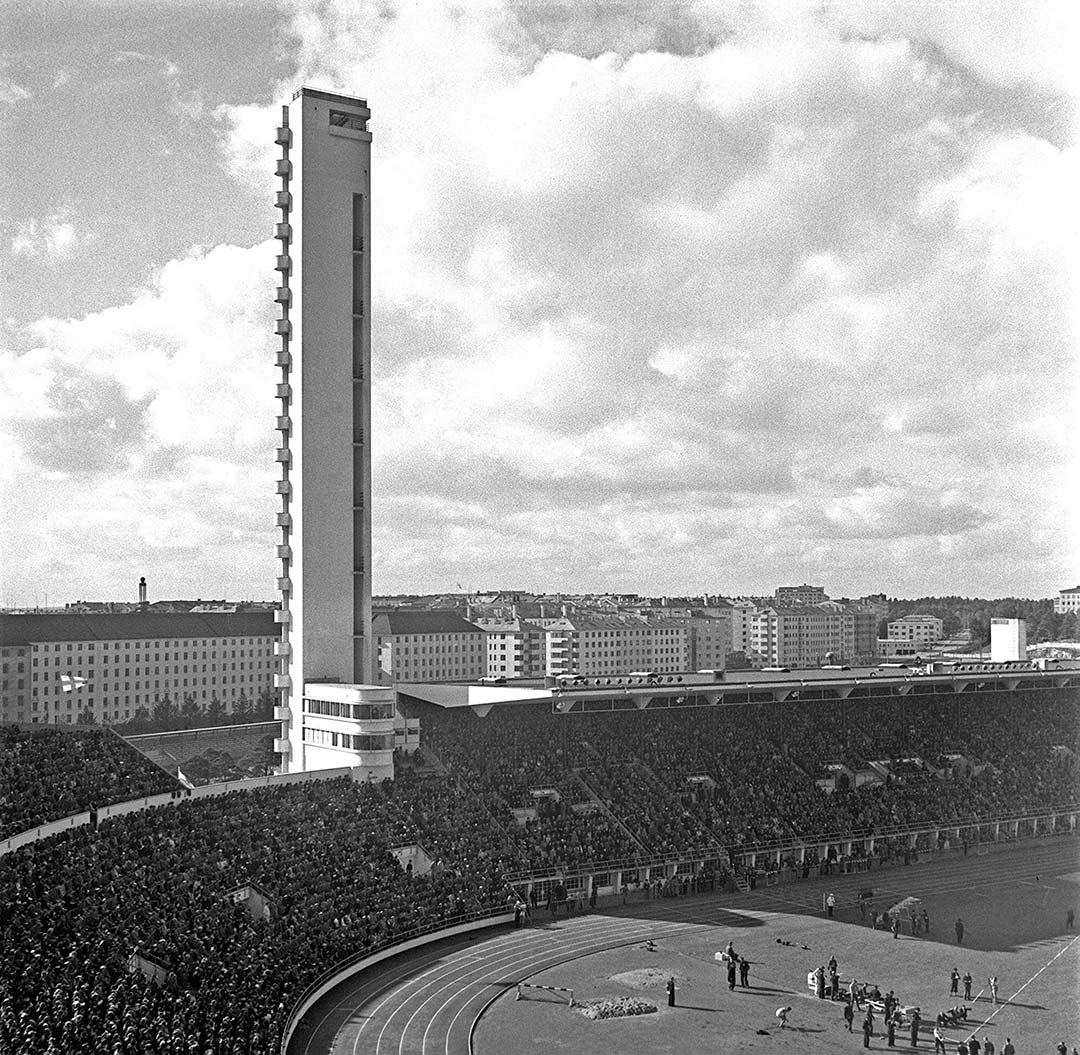
Building lasting attractions
Other host cities share in Barcelona’s success in building lasting Olympic attractions in their cities, becoming an intriguing part of the city’s cultural identity that lasts well beyond the four weeks in August while they are used. The functionalist structures for the Helsinki Olympics of 1952, for example, have become a kind of Bauhaus theme park for modernism fans. Their stripped-back style harks from the 1930s, as World War II delayed Helsinki’s hosting for a decade. To wander this quiet campus on a winter afternoon, drinking in the promise and optimism embodied in these buildings, is a joy. And of course it all feels completely at home in design-forward Finland.
Still in use today, Tokyo’s brutalist stadiums and sports halls from the 1964 Olympics by Kenzo Tange are arresting sights, introducing gutsy concrete structures to the city that bare their technical teeth with engineering flourishes such as suspension pylons. More recently, Tokyo hosted the so-called ‘Covid Games’, which ended up being postponed, and was mostly carried out behind closed doors in 2021. Those venues constructed for the Games, including architect Kengo Kuma’s larch and cedar-clad Japan National Stadium, feel like Cinderellas who never really got their chance. Theirs is a much more complex and confusing legacy.
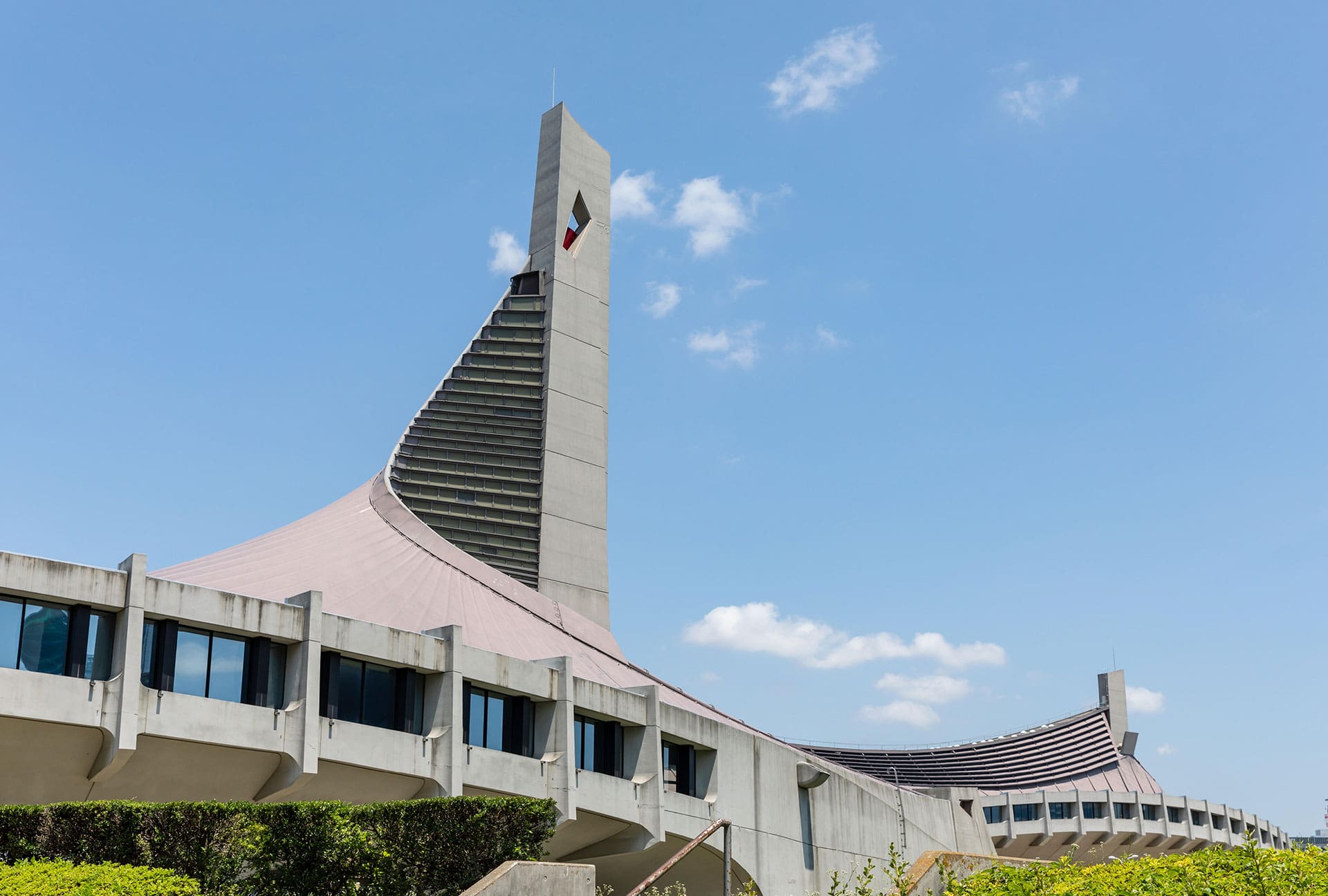
Host cities with complex histories
There are numerous intriguing architectural oddities that have had differing legacies on Olympic host cities. Tallinn’s brutalist Linnahall was built as a combination of an indoor theatre with its roof designed as a giant open-air viewing deck for the sailing that took place here as part of the 1980 Olympics in Moscow. Today the abandoned, semi-derelict Linnahall on the city’s waterfront is Tallinn’s biggest and weirdest white elephant. Various plans have been mooted from demolition to refurbishment.
“Finding a new purpose for this iconic brutalist building has been a struggle in Tallinn for a decade, but I would champion an idea of a contemporary culture centre like the Barbican Centre or Southbank Centre in London – bringing together music, arts, business, food, tourism, brands, technology and best sustainable practices,” says Helen Sildna, founder and CEO of Tallinn Music Week. Sildna put on a show by Lou Reed at the Linnahall in 2008 when it was usable. Since then it has starred as a dystopian location in Christopher Nolan’s Tenet. “Both Tallinn and Helsinki combined are in desperate need for a 4,000-capacity concert hall and the landmark value of Linnahall is indisputable.”

Berlin’s Olympic Stadium and Pool in Charlottenburg from the 1930s is the opposite of Helsinki’s clean and positive modernism: a fascist artefact from Hitler’s “PR Games”, but one that Berlin has chosen to keep and make the best of. Athens 2004 proved a financially problematic event for the city, too, and its abandoned infrastructure and stadiums are the stuff of legend. “I’d say that all stakeholders – municipal authorities, public and private sector – need a viable mid- and long-term business and development plans so that all new venues can be put to good use to benefit the community and remain financially sustainable,” says Athens-based journalist Giorgos Tisors.
Another city famous for its abandoned infrastructure is Sarajevo, Bosnia, which hosted the Winter Olympics in 1984, thrusting the city into the global spotlight before the Yugoslav Wars saw its various venues and bobsleigh track in particular become among the most famous examples of abandoned architecture in the world, beloved of ‘ruin porn’ photographers. The Holiday Inn – which was built for the Winter Olympics by acclaimed Bosnian architect Ivan Straus – gained a notorious new life during the war when it housed reporters covering the conflict and featured in news coverage when it was hit multiple times.
“Sarajevans remember the Olympics fondly as a time when the city and Yugoslavia was in the global spotlight for something positive. In a sense, it was the city and the country’s last hurrah,” says writer Peter Korchnak, who runs the RememberingYugoslavia Instagram feed. “At the recent 40th anniversary of the Sarajevo Olympics, the whole city lived the week-long celebrations, pointing to a future where the legacy of the Games will serve as an example of what can be done for the city to thrive.”
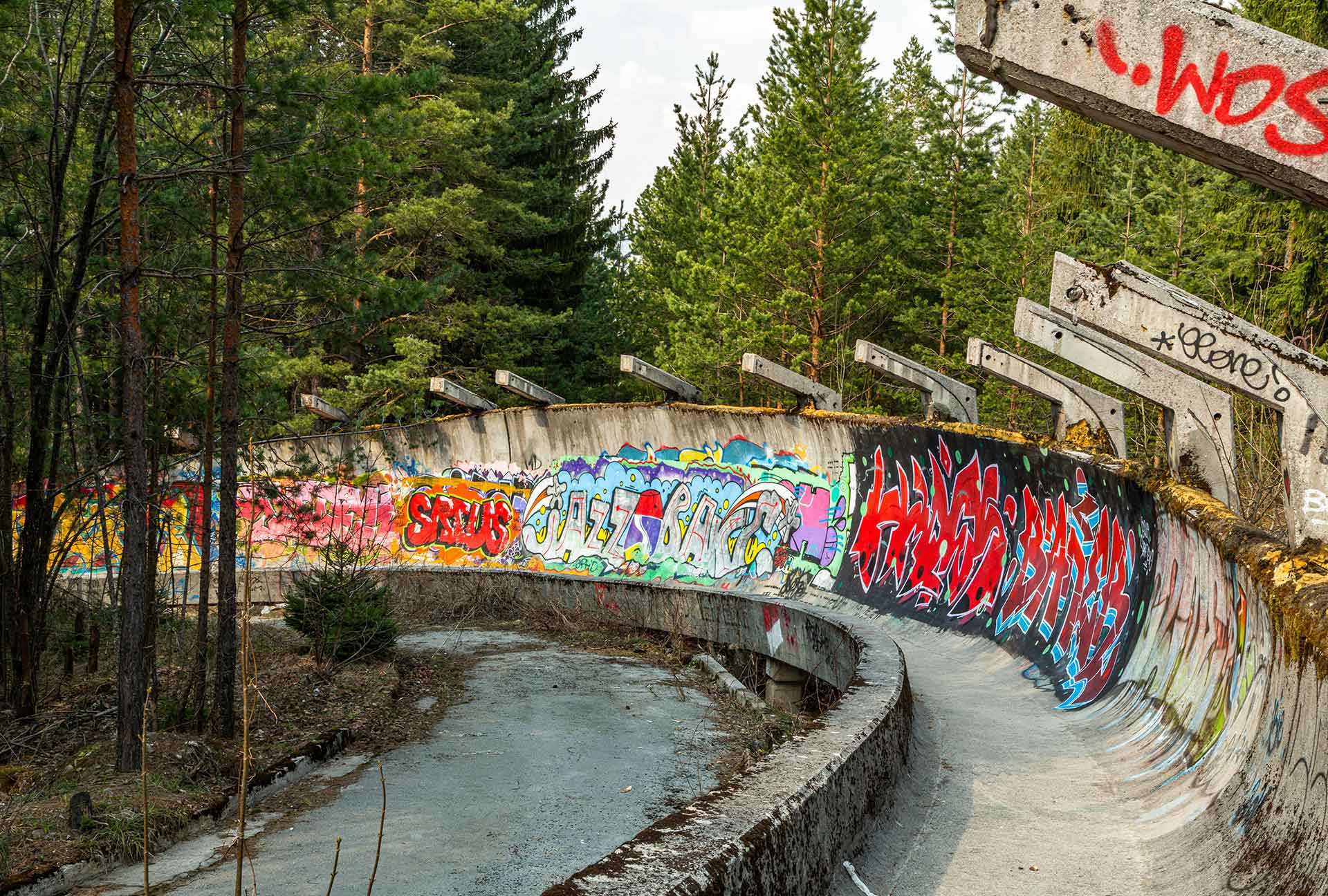
Lessons from the London Olympics
It seems right to revisit the Olympics site in my home city, London – an event that, from the dramatic Danny Boyle-directed opening ceremony onwards, proved quite the party. Yet the project, which saw wholesale transformation of deprived former industrial lands along the Lee Valley in London’s East End, was chronicled best by author Iain Sinclair, who saw this mix of urban regeneration, clean ups and demolitions as a peculiar type of turn-of-the-millennium Britishness; a multicoloured profit-driven uneasiness that contrasts sharply with the confidence of the modern architecture London saw 50 years earlier.
Across a site that’s not always easy to wander, cut up by railways and canals, iconic buildings like Zaha Hadid’s Aquatics Centre, the Copper Box and the Velodrome (aka The Pringle) – not to mention the towering ArcelorMittal Orbit superslide by Anish Kapoor – still stand out. A new park links these buildings, and Stratford’s new crop of cultural institutions – including the V&A, Sadler’s Wells and offshoots of Loughborough University – promise further signs of life. Yet the toytown architecture and speculative skyscrapers that followed the social cleansing of the likes of the Carpenter’s Estate add up to a complex legacy.

Given the vast investment required to host an Olympic Games – summer events have cost upwards of 10 billion USD for the past 20 years – a great deal rests on its legacy. Even Sydney, which in 2000 hosted what Olympic Committee president Juan Antonio Samarach proclaimed the “best Games ever”, suffered a post-event hangover, with its Olympic Park struggling to find its identity and fulfil its potential in the years that followed. As the Barcelona Games have proved, a focus on cultural and architectural integration is a crucial factor.
What to expect from Paris 2024
So as Paris takes centre stage, how should we think about how a legacy shapes a city? “Games planning isn’t just about the reuse and repositioning of buildings and infrastructure but critically the spaces in between: public spaces that everyone can enjoy during and after the Games,” says Kirsten Lees, managing partner for Paris at Grimshaw architecture practice, which – among other achievements – master-planned the new Wimbledon tennis site. “The climate emergency, and the need for social equity, prosperity and wellbeing demand more sustainable and regenerative approaches to ensure the best legacy.”
Paris has been sparing with new construction and many venues already exist or are pop-ups. Beach volleyball takes place in a temporary new stadium under the Eiffel Tower, skateboarding, BMX and basketball take over Place de la Concorde while equestrian events happen at pop-up venues in the gardens of the famous palace of Versailles.
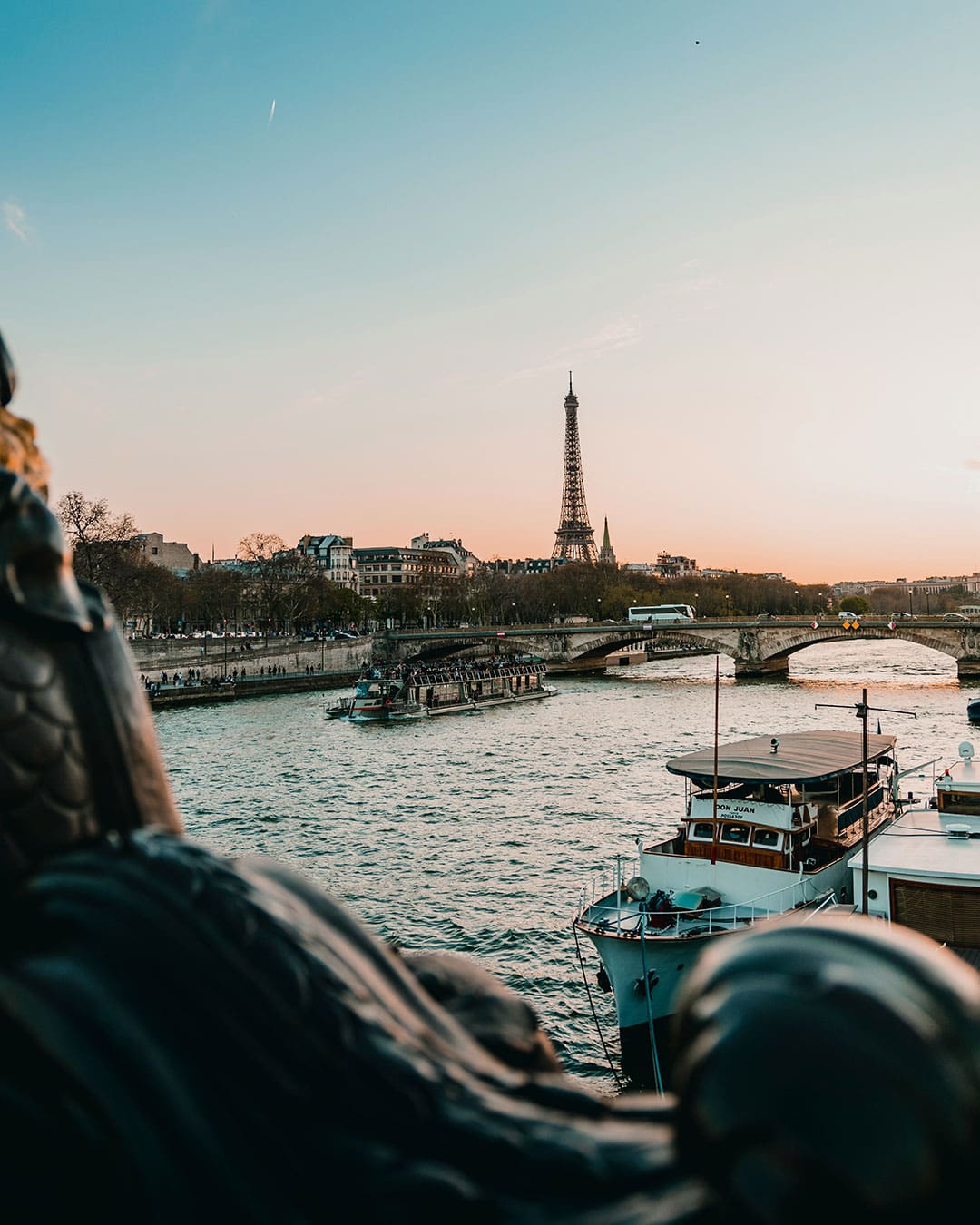
The new Adidas Arena in La Chapelle, to the north of the city, is a notable permanent exception. “This will be a legacy of Paris 2024. It is the only structure in Paris that will continue to exist after the event, to best meet the needs of local residents,” says Nicolas Dupeux of Paris Entertainment Company of the series of high-quality gymnasiums and sports facilities intended to benefit the local community. “What’s more, the arena will be enhanced by the arrival of Le Bloc, a 3,600 sqm hybrid sports and entertainment venue. The Bloc will become a year-round focal point for the community. Hosting the Games in Paris is a fantastic opportunity to revitalise neighbourhood life and to restore entertainment to its rightful place.”
The River Seine is also at the centre of things, with the event’s novel opening parade along the river sure to catch the eye. While Mayor Anne Hidalgo’s removal of autoroutes from the banks and reinstatement of beaches and promenades is mostly a pre-Olympic endeavour, new ambitions to make the Seine safe for competitive swimming represent a laudable grand projet. As Kirsten Lees says: “Today we need to ask not: ‘how will the Games help regenerate the city?’ but: ‘what does the city need and how can the Games support this.’”
Future legacies
Los Angeles is hosting the next Olympics in 2028, with plans to mix new infrastructure and venues with those built for its two former Olympic Games. The Swim Stadium from 1932 remains a great place for a dip in a city of private pools, and some of the 1984 stadiums will also be reused. Yet LA is investing big in transport for 2028. This spend is visible at LAX where a new People Mover automatic train and car hire centre will soon open and change the game at this notoriously congested airport. New subway lines are coming too – with transport improvements often giving the Olympics’ best long-term legacy benefits for residents.
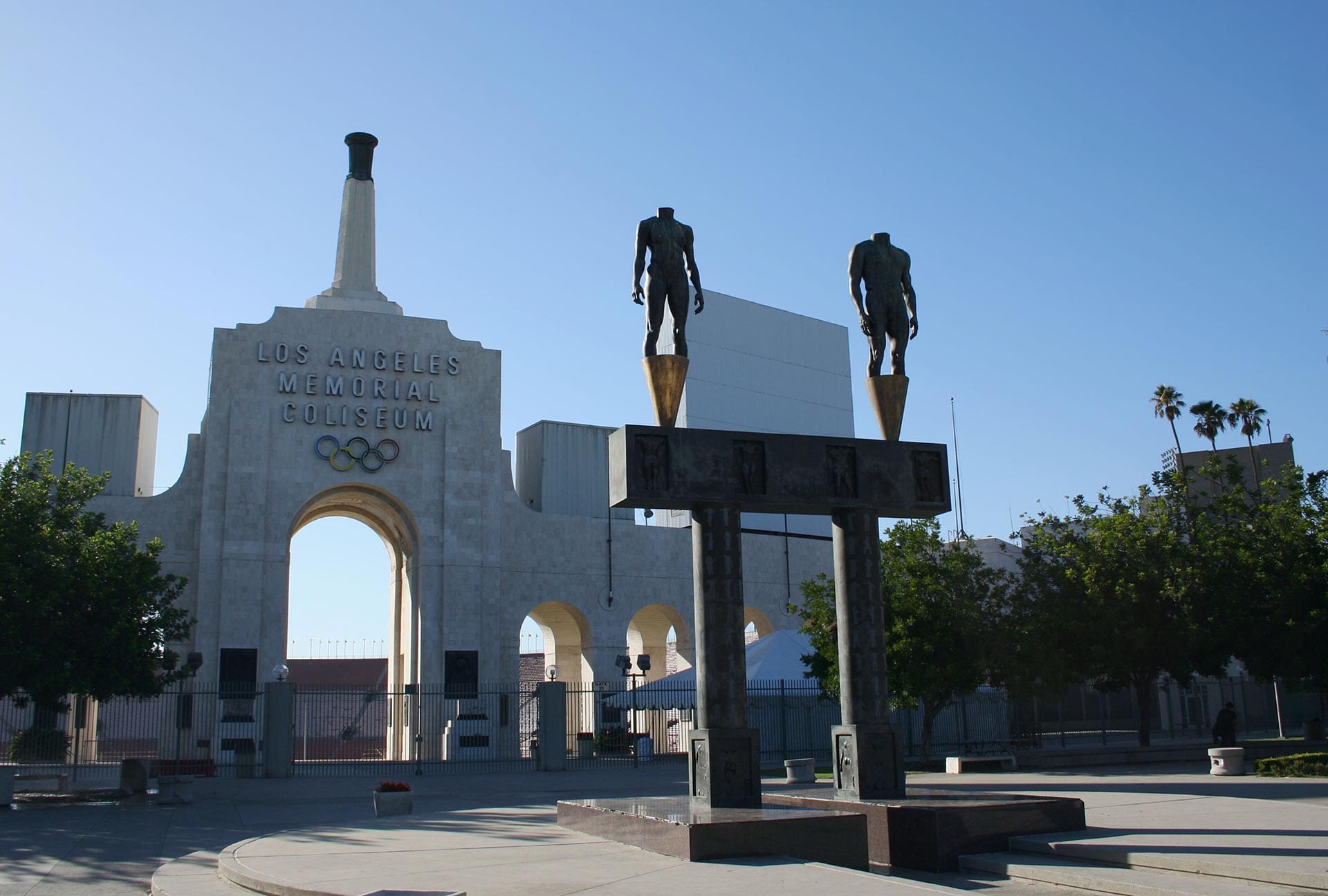
Only time will tell what legacy this summer’s event will leave Paris. But the interesting thing about the Olympics, as with Expos and World Fairs, is that even when the planning and architecture haven’t quite worked, they still tell a fascinating story about a particular place and time and the values being espoused in that era. And if Paris 2024 can pull off Barcelona’s success, then it will truly be a memorable Games.

